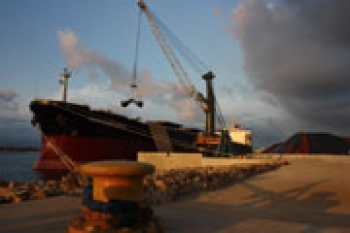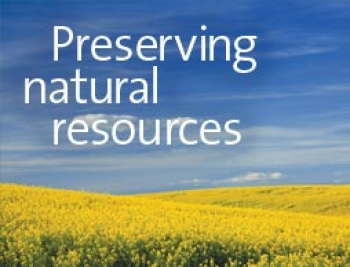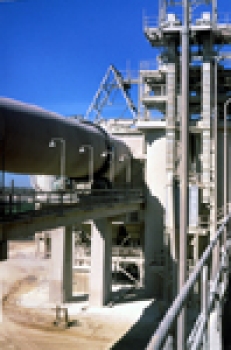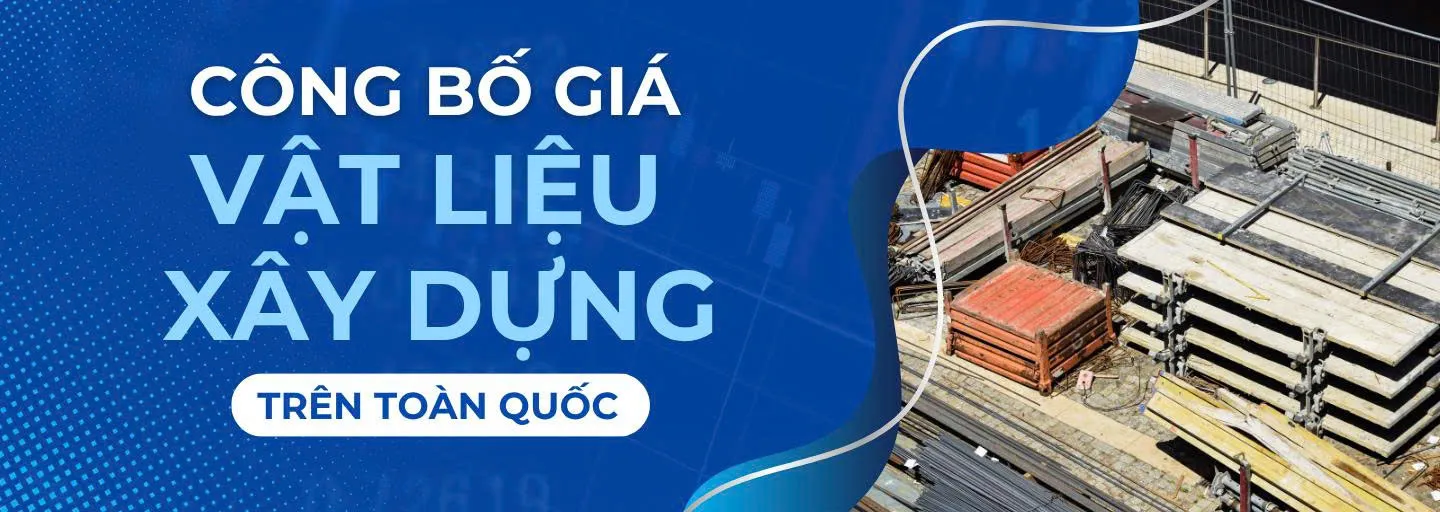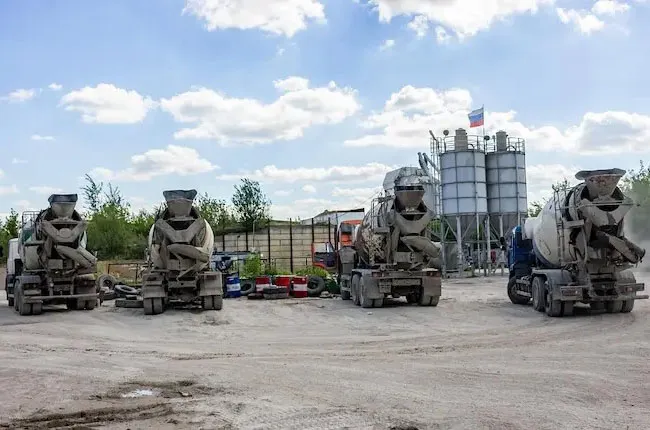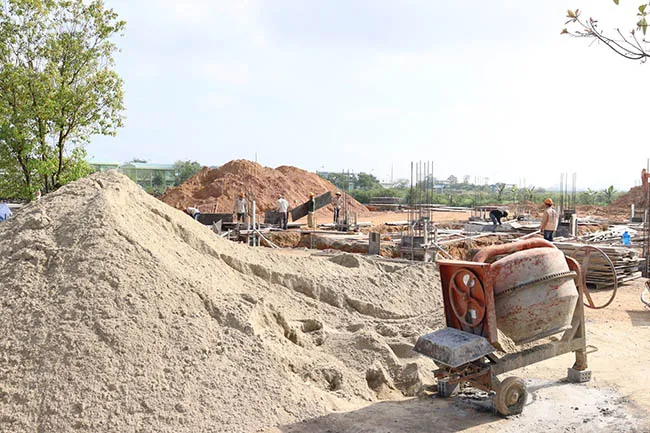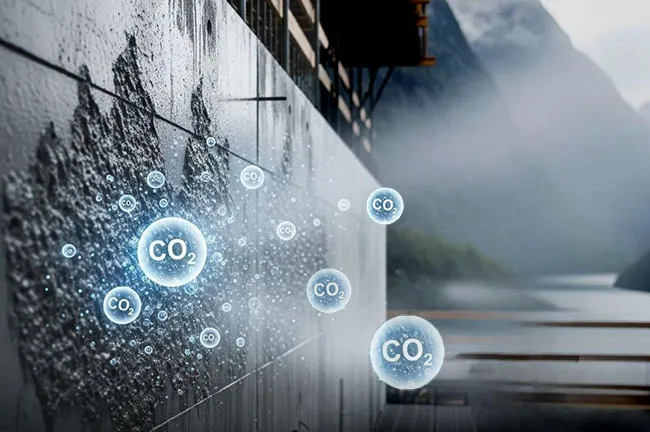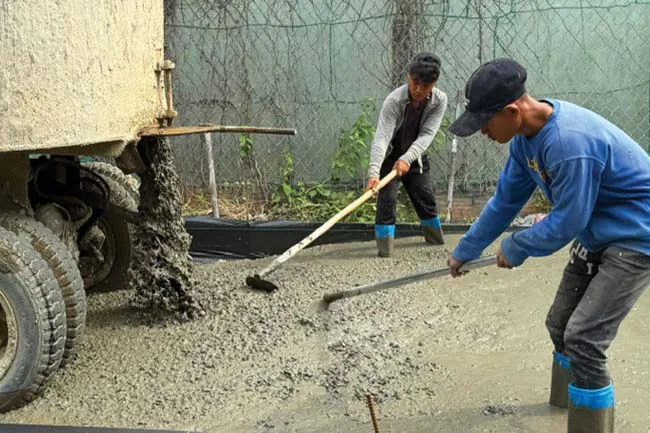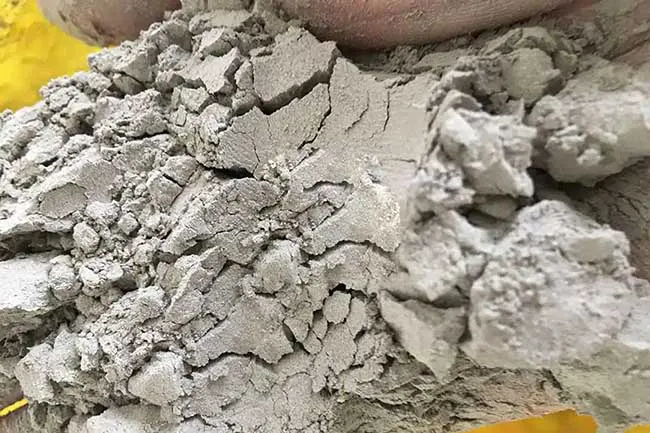Manufacturing Process
Portland cement, the fundamental ingredient in concrete, is a calcium
silicate cement made with a combination of calcium, silicon, aluminum,
and iron. Producing a cement that meets specific chemical and physical
specifications requires careful control of the manufacturing process.
The first step in the portland cement manufacturing process is obtaining
raw materials. Generally, raw materials consisting of combinations of
limestone, shells or chalk, and shale, clay, sand, or iron ore are mined
from a quarry near the plant. At the quarry, the raw materials are
reduced by primary and secondary crushers. Stone is first reduced to
5-inch size (125-mm), then to 3/4-inch(19 mm).
Once the raw materials arrive at the cement plant, the materials are
proportioned to create a cement with a specific chemical composition.
Two different methods, dry and wet, are used to manufacture portland
cement.
In the dry process, dry raw materials are proportioned, ground to a
powder, blended together and fed to the kiln in a dry state. In the wet
process, a slurry is formed by adding water to the properly proportioned
raw materials. The grinding and blending operations are then completed
with the materials in slurry form.
After blending, the mixture of raw materials is fed into the upper end
of a tilted rotating, cylindrical kiln. The mixture passes through the
kiln at a rate controlled by the slope and rotational speed of the kiln.
Burning fuel consisting of powdered coal or natural gas is forced into
the lower end of the kiln. Inside the kiln, raw materials reach
temperatures of 2600�F to 3000�F (1430�C to 1650�C). At 2700�F (1480�C),
a series of chemical reactions cause the materials to fuse and create
cement clinker-grayish-black pellets, often the size of marbles. Clinker
is discharged red-hot from the lower end of the kiln and transferred to
various types of coolers to lower the clinker to handling temperatures.
Cooled clinker is combined with gypsum and ground into a fine gray
powder. The clinker is ground so fine that nearly all of it passes
through a No. 200 mesh (75 micron) sieve. This fine gray powder is
portland cement.
Types of Portland Cement
Different types of portland cement are manufactured to meet various
physical and chemical requirements. The American Society for Testing
and Materials (ASTM) Specification C-150 provides for eight types
of portland cement.Type I portland cement is a normal, general-purpose
cement suitable for all uses. It is used in general construction
projects such as buildings, bridges, floors, pavements, and other
precast concrete products. Type IA portland cement is similar to
Type I with the addition of air-entraining properties. Type II portland
cement generates less heat at a slower rate and has a moderate resistance
to sulfate attack. Type IIA portland cement is identical to Type
II and produces air-entrained concrete. Type III portland cement
is a high-early-strength cement and causes concrete to set and gain
strength rapidly. Type III is chemically and physically similar
to Type I, except that its particles have been ground finer. Type
IIIA is an air-entraining, high-early-strength cement. Type IV portland
cement has a low heat of hydration and develops strength at a slower
rate than other cement types, making it ideal for use in dams and
other massive concrete structures where there is little chance for
heat to escape. Type V portland cement is used only in concrete
structures that will be exposed to severe sulfate action, principally
where concrete is exposed to soil and groundwater with a high sulfate
content.
Portland cements can also be made to ASTM C1157 and include the following: Type GU hydraulic cement for general construction, Type HE-high-early-strength cement, Type MS-moderate sulfate resistant cement, Type HS-high sulfate resistant cement, Type MH-moderate heat of hydration cement, and Type LH-low heat of hydration cement. These cements can also be designated for low reactivity (option R) with alkali-reactive aggregates.
White Portland Cement
In addition to the eight types of portland cement, a number of special
purpose hydraulic cements are manufactured. Among these is white
portland cement. White portland cement is identical to gray portland
cement except in color. During the manufacturing process, manufacturers
select raw materials that contain only negligible amounts of iron and
magnesium oxides, the substances that give gray cement its color. White
cement is used whenever architectural considerations specify white or
colored concrete or mortar.
Blended Hydraulic Cements
Blended hydraulic cements are produced by intimately blending two or
more types of cementitious material. Primary blending materials are
portland cement, ground granulated blast-furnace slag, fly ash, natural
pozzolans, and silica fume. These cements are commonly used in the same
manner as portland cements. Blended hydraulic cements conform to the
requirements of ASTM C595 or C1157. ASTM C595 cements are as follows:
Type IS-portland blast-furnace slag cement, Type IP and Type
P-portland-pozzolan cement, Type S-slag cement, Type I (PM)-pozzolan
modified portland cement, and Type I (SM)-slag modified portland cement.
The blast-furnace slag content of Type IS is between 25 percent and 70
percent by mass. The pozzolan content of Types IP and P is between 15
percent and 40 percent by mass of the blended cement. Type I (PM)
contains less than 15 percent pozzolan. Type S contains at least 70
percent slag by mass. Type I (SM) contains less than 25 percent slag by
mass. The supplementary materials in these cements are explained further
on page 28. These blended cements may also be designated as
air-entraining, moderate sulfate resistant, or with moderate or low heat
of hydration. ASTM C1157 blended hydraulic cements include the
following: Type GU-blended hydraulic cement for general construction,
Type HE-high-early-strength cement, Type MS-moderate sulfate resistant
cement, Type HS-high sulfate resistant cement, Type MH-moderate heat of
hydration cement, and Type LH-low heat of hydration cement. These
cements can also be designated for low reactivity (option R) with
alkali-reactive aggregates. There are no restrictions as to the
composition of the C1157 cements. The manufacturer can optimize
ingredients, such as pozzolans and slags, to optimize for particular
concrete properties.
The most common blended cements available are Types IP and IS. The
United States uses a relatively small amount of blended cement compared
to countries in Europe or Asia. However, this may change with consumer
demands for products with specific properties, along with environmental
and energy concerns.
Expansive Cements
Expansive cements are hydraulic cements that expand slightly during the
early hardening period after setting. They meet the requirements of ASTM
C845 in which it is designated as Type E-1. Although three varieties of
expansive cement are designated in the standard as K, M, and S, only K
is available in the United States. Type E-1 (K) contains portland
cement, anhydrous tetracalcium trialuminosulfate, calcium sulfate, and
uncombined calcium oxide (lime). Expansive cement is used to make
shrinkage-compensating concrete that is used (1) to compensate for
volume decrease due to drying shrinkage, (2) to induce tensile stress in
reinforcement, and (3) to stabilize long-term dimensions of
post-tensioned concrete structures. One of the major advantages of using
expansive cement is in the control and reduction of drying-shrinkage
cracks. In recent years, shrinkage-compensating concrete has been of
particular interest in bridge deck construction, where crack development
must be minimized.
Anh Van- By: www.cement.org


